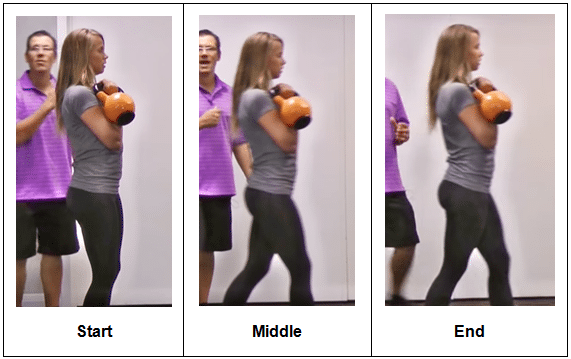In this video, I wanted to go through a great kettlebell exercise for the rotator cuff.
CLICK HERE to watch the YouTube video.
I am going to get Alix to demonstrate it.
Rotator cuff injuries are very common, but what is the rotator cuff, and how do you injure your rotator cuff? A rotator cuff is a group of muscles and tendons surrounding the shoulder joint. These muscles and tendons work together to keep the head of the shoulder joint [¹] secured in the socket of the shoulder. If you experience a dull ache in your shoulder that worsens when you move your arm away from your body, you may have a rotator cuff injury. Other symptoms include a dull ache deep in the shoulder, disturbed sleep, difficulty brushing your hair or reaching behind you, and arm weakness.
Rotator cuff injuries increase with age and are more likely to occur in individuals with jobs that repeatedly perform overhead movements. Jobs like this include painters and carpenters. Rotator cuff injuries are usually treated with physical therapy exercises that improve flexibility and strength in the rotator cuff muscles. Medical evaluation is necessary, and surgery is sometimes necessary in the case of a tear in the rotator cuff.
Kettlebell Exercise for the Rotator Cuff
Grab the kettlebell and move it into a kettlebell rack position. To do this, bend your elbow and bring your hand tight toward your chest. Keep your elbow pressing into your body. Tighten up your shoulder and move the kettlebell towards your spine. Keep your core engaged and your shoulders stacked over your hips. Then, walk with that kettlebell in that position.

There you go! If you have a rotator cuff injury or are recovering from a rotator cuff injury, give that exercise a go. Make sure that you get that kettlebell in the correct position. Assure that you have tension around that shoulder blade, and then bring that shoulder down at an angle towards the spine. Be certain that things are tight in that shoulder blade area.
We are working on those scapular and shoulder blade muscles, which are important when it comes to overcoming and preventing rotator cuff injury [²]. We are also activating and challenging the rotator cuff in that safe position. When the elbow is up against the body, it puts less stress on the rotator cuff. The kettlebell pulls the arm back and activates the rotator cuff muscles in an asymmetric contraction, which means the joint is not moving. The muscles are just being engaged and worked.
Final Word
Make sure to swing by ExercisesForInjuries.com. Enter
your injury or pain in the search bar on the top right of the screen. There is a good chance that I have an article, a video, or an interview that will help you overcome your injury or pain.
Secondly, if you watch this on YouTube, head above and hit “Subscribe.” If you subscribe, you will get a video like this every couple of days where I talk about tips and tricks on overcoming injury and pain.
Thirdly, head down below hit “Like,” and leave me a question or comment.
Take care!
Rick Kaselj, MS
If you want to decrease pain, improve your range of motion and increase your rotator cuff strength, click here to check out the Shoulder Pain Solved program.
1.https://journals.lww.com/jbjsjournal/citation/1944/26010/OBSERVATIONS_ON_THE_FUNCTION_OF_THE_SHOULDER.1.aspx
2.https://journals.sagepub.com/doi/abs/10.1177/036354659602400303